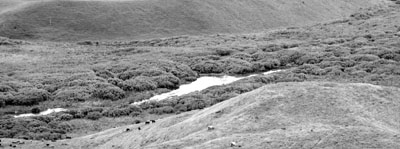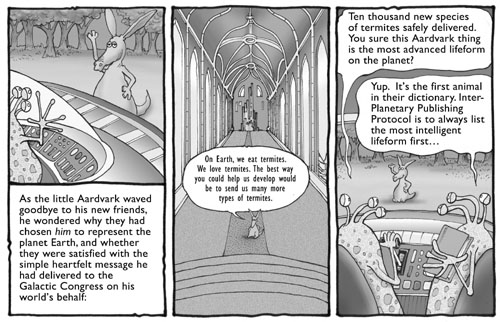Claims about pre-Maori colonisation of New Zealand refuse to go away.
There’s one born every minute. Former Act MP Muriel Newman appears to be the latest convert to the view that New Zealand was colonised thousands of years ago. Nowadays Newman runs a website-based forum called the New Zealand Centre for Political Debate (www.nzcpd.com), for which she writes a weekly column called the Newman Weekly. In January this year she posted an article called “History in the Making” arguing that recent alternative interpretations of world history challenge the view that Maori are Tangata Whenua. She wrote:
Claims have been made that New Zealand was discovered from as early as 600 BC by Phoenician, Indian, Greek and Arab explorers. In fact claims of their visits help to explain the existence in the South Island of the fossilised remains of rats that have been carbon dated at 160 BC — more than 1000 years before Maori! There are further claims that before Maori arrived in New Zealand settlements had already been established by the Waitaha, the peace-loving fair skinned ancestors of the Moriori, by Chinese miners, and by the celts.
Newman has obviously been reading the fanciful inventions of Martin Doutré (she lists his website as a ‘useful’ reference), Barry Brailsford and Ross Wiseman, whose writings have no credibility among historians and scientists and have been roundly debunked in the NZ Skeptic and other journals (see NZ Skeptic 68, 72 and 73).
Newman also cited Gavin Menzies, the author of the best selling book 1421 which argues that the Chinese mariner Zheng He discovered America in 1421, 71 years before Columbus. She quoted Menzies’ remarks that:
The New Zealand Government possesses several skeletons carbon dated to centuries before the Maori claimed to have reached the North and South Islands. These skeletons should have their DNA examined … however, we need the consent of the New Zealand Government who, as might be expected, have passed the buck by saying we need Maori consent.
Newman also cited an article in the Economist which discussed Menzies’ claims.
Muriel Newman’s agenda is not hard to discern. The burden of her song is that if evidence emerged that non-Polynesian people settled in New Zealand before the Maori it would negate the Treaty of Waitangi. She cited claims (not sourced, but clearly echoing Martin Doutré) that the New Zealand Government and officials censor the historical record by refusing to allow alleged non-Polynesian human remains to be carbon dated and DNA tested. The intended implication is that the New Zealand Government is deliberately suppressing an alternative version of New Zealand history that would rewrite the New Zealand history books to better fit with Muriel Newman’s dream of a New Zealand without the Treaty of Waitangi. Newman is clutching at straws and her arguments fall apart as soon as you examine the detail. Let me elaborate.
She misused the Economist article. That article was entitled China beat Columbus to it – perhaps (12 Jan 2006) and was about a 1763 map of the world thought to be (but not yet authenticated as) an accurate copy of a 1418 Chinese map. Newman cited this article as support for Gavin Menzies’ belief that Chinese colonies existed in New Zealand hundreds of years before Maori arrived. The Economist article said no such thing. It was about historical events in the early 1400s and only referred to possible Chinese visits to New Zealand in the twelfth to fifteenth centuries (when New Zealand was already settled by Maori forebears). Newman read what she wanted into the Economist article.
She misconstrues, or misunderstands, the Treaty of Waitangi. Evidence that non-Polynesian people inhabited New Zealand before Maori would certainly be an exciting discovery (no hard evidence exists yet), but it would not negate the Treaty of Waitangi, which was between the British Crown and the large population of Maori tribes inhabiting New Zealand in the early 1800s. The validity of this treaty is not dependent on who inhabited New Zealand prior to AD 1000, it is dependent on who signed it in 1840. Treaties are between the signatories.
In another non sequitur Newman said, “The testing of Maori DNA … would go a long way towards confirming or refuting these claims, but sadly many Maori appear to be opposed to its use.” She adds that some Maori were unwilling to participate in the National Geographic Genographic Project. Exactly what point she was trying to make here escapes me. Since Maori DNA can only indicate where Maori originated (the whole point of the Genographic project) it is not going to tell us anything about whether non-Maori were in New Zealand earlier.
Newman appealed to Gavin Menzies’ writings as if they are exciting new evidence that rewrites history. They are not. They use the same methods as other fringe theorists – misrepresentations of other authors, unverifiable conspiracy theories about suppressed evidence, logical fallacies, long strings of speculative argumentation, uncited sources, invented evidence, impressive-looking long lists of supporting evidence that fall apart when subjected to expert scrutiny, and contempt for mainstream scholarship. (See historian Robert Finlay’s detailed critique of Menzies’ book at www.historycooperative.org/journals/jwh/15.2/finlay.html See also David Riddell’s review of Menzies’ book in NZ Skeptic Number 67, Autumn 2003.)

You don’t have to read very far in Menzies’ writings to detect the fanciful and far-fetched. Thirty Chinese ships containing 7000 people, trained otters (to herd fish into nets) and thousands of horses (to stock the Americas) visited almost every part of the world including Antarctica in the three years between 1421 and 1423, establishing scores of colonies and metal mining operations along the way? As Robert Finlay demonstrated, such an absurd scenario never happened. As is well documented in the contemporary Chinese records, and in the substantial scholarly literature on the subject, of the seven expeditions of Zheng He’s fleets between 1405 and 1433 only one occurred between 1421 and 1423, and its ports of call were confined to the Indian Ocean. The rest is a figment of Menzies’ imagination.
Muriel Newman’s innuendo that the New Zealand Government is deliberately suppressing a possible alternative view of history by refusing to allow alleged carbon dated pre-Maori human remains to be DNA tested is a gross distortion she has picked up from Martin Doutré. Doutré is obviously driven by his own agenda to prove that Maori are not Tangata Whenua. He has complained in his writings that efforts by him and his friends to have human remains radiocarbon dated have been blocked by the protocols in place at laboratories requiring human remains to be appropriately documented to verify where and how they were obtained and who authorised the laboratory analysis work (which sometimes requires destruction of the sample). Doutré thinks that when some wandering amateur finds a European jaw bone in a remote cave it is essential to have it carbon dated in case it proves his pet theory that non-Polynesians inhabited New Zealand thousands of years before Maori. Archaeological methods demand somewhat more rigour than this to reach valid conclusions, not to mention the need for human remains to be suitably respected and for police interests to be eliminated.
There are, of course, hundreds of human remains stored in New Zealand museums. Many of them have been there for more than 100 years and they have arrived in the museums by all sorts of routes – some proper, some improper, some innocent, some dubious, some unknown. In recent times those whose origins have been authenticated have been rightly released to their Maori owners when requested. These skeletal remains have always been available to science via the proper channels and protocols, which are quite rightly strict. Dr Philip Houghton published definitive textbooks in the 1970s and 1990s based on his scientific analysis of the skeletal remains of over 90 human individuals in New Zealand repositories. His work clearly identified the earliest inhabitants of New Zealand as Polynesian. Over the past 100 years archaeologists have excavated hundreds of human occupation sites throughout New Zealand yielding thousands of artefacts and hundreds of radiocarbon dates. All this archaeological, genetic and phenotypic evidence indicates that these inhabitants came from the Pacific Islands. From a scientific viewpoint this body of evidence is overwhelming. As yet, no evidence of human settlement of New Zealand has been found earlier than about AD 1000. Such evidence may be forthcoming in the future, but meantime the speculations of Martin Doutré, Gavin Menzies, and other wishful alternative theorists, should be treated with great suspicion and certainly don’t constitute evidence of the sort useful to science. (For a succinct and well-documented overview of the current understanding of the human settlement of New Zealand read KR Howe, The Quest for Origins.)
Muriel Newman waxes indignant about the suppression of alternative views of history and the dire implications of this for freedom of expression. Yet a cursory glance at the mass media confirms that crackpot theories get aired even more than orthodox ones because people love a juicy yarn. The Menzies book has been on the New York best seller list for a long time. Doutré, Wiseman and their bedfellows have self-published their books without any prior expert evaluation. Like Muriel Newman they have their own websites where they can write what they like for the whole world to read. Newman should be grateful for such freedom to peddle distortions.

